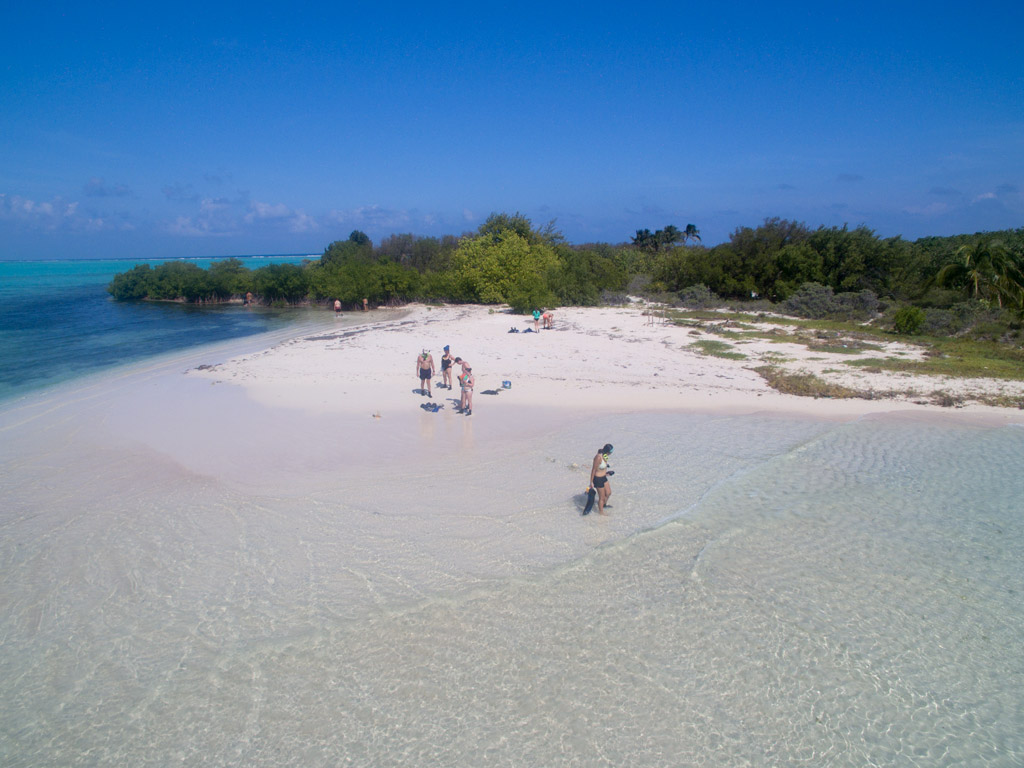About Little Cayman
TROPICAL PARADISE
Little Cayman is the smallest and least populated of the three Cayman Islands (Grand Cayman, Cayman Brac, and Little Cayman). The island is 10 miles long and 1 mile wide, with fewer than 200 full-time residents. Though Little Cayman is a tropical paradise with limited human development, it is only a short, 30-minute plane ride from Grand Cayman, which is easily accessible with direct flights from Miami, Houston, Tampa, New York, Atlanta, Charlotte, Toronto and many other major cities. It is this combination that makes Little Cayman a mecca for marine researchers and educators alike. The close proximity to Grand Cayman, with full medical facilities and access to fresh food and resources means Little Cayman is extremely well supported for a small tropical island.
The coral reefs of Little Cayman are arguably the best in the Caribbean for research because they are isolated from continental and anthropogenic influences and support a biologically diverse marine ecosystem. The local reefs contain large populations of mega fauna, including spotted eagle rays, one of the last spawning aggregations sites with thousands of Nassau grouper, year-round hawksbill and green turtles, as well as loggerheads in mating season and a shark population — all protected by the Bloody Bay Marine Park. This combination of water quality, diverse coral and fish species, and abundance of easily seen large mammals and fish is also why Little Cayman has been rated one of the top diving destinations in the Caribbean.
Little Cayman is not just a marine haven however. In terms of terrestrial species, Little Cayman has the largest breeding population of Red-Footed Boobies in the Western Hemisphere, a healthy population of magnificent frigate birds, the endangered West Indian whistling duck, occasional parrots, abundant endemic rock iguanas which grow over four feet long, anole lizards, and a wide variety of land and sea crabs.
CCMI successfully championed Little Cayman to be named a Mission Blue Hope Spot in 2020.
Little Cayman is recognized as a Hope Spot because of the high abundance of threatened and endemic species found there. Just off the western point of Little Cayman is a site protected by the Cayman Islands Government that is one of the last remaining large spawning aggregation sites for the endangered Nassau grouper. Green, hawksbill, and loggerhead turtles nest in the hundreds on Little Cayman’s beaches every year, and the coast is abundant with marine life, including seven species of sharks.
Little Cayman’s coral reefs are also a vibrant contributor to the island’s rich biodiversity. CCMI’s restoration and assisted evolution research efforts examine the features that enable corals to persist through time, despite changing conditions, including working with staghorn and elkhorn coral. Both of these coral species are critically endangered following a disease outbreak and die-off in the 1980s. They are crucial reef-builders that used to be prevalent throughout the Caribbean, and they are extremely important to the resiliency of healthy coral reefs. Little Cayman’s biodiversity both on land and in the ocean are significant, and CCMI’s scientific discoveries continue to grow our knowledge of these key ecosystems. Learn more about the Little Cayman Hope Spot.

“Hope Spots are special places that are critical to the health of the ocean — Earth’s blue heart. Hope Spots are about recognizing, empowering and supporting individuals and communities around the world in their efforts to protect the ocean.”
 CONTACT
CONTACT gallery
gallery facebook
facebook instagram
instagram youtube
youtube twitter
twitter